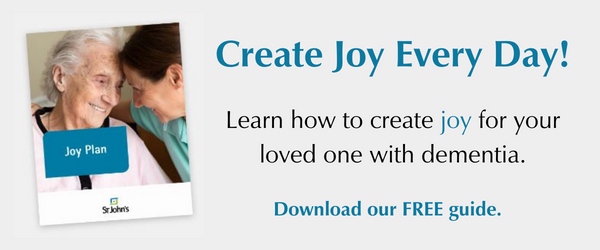Being a family caregiver is a demanding role. One of the biggest challenges for at-home caregivers can be keeping a loved one engaged and entertained throughout the day.
Keeping a person living with Alzheimer’s disease or another form of dementia socially stimulated can be particularly taxing if the caregiver is forced to be the sole source of activity. As the disease progresses, changes in mood and lowered enthusiasm for everyday activities is common. Keeping your loved one engaged requires creativity and a deep understanding of the person’s interests, personal background, and abilities.
Whether it’s playing games, going for walks in the park, or even engaging in arts and crafts projects, the key is to find activities that not only keep them entertained but also stimulate their minds enough to keep the activity going. It is particularly important to tailor the activities to the person’s specific needs and preferences, ensuring that the activity is enjoyable and meaningful for both the caregiver and their loved one. If this is achieved, family caregivers can enhance their loved one’s quality of life as well as their own!
A Few of the Benefits of Engaging Activities
Reduced anxiety and stress: Engaging in fun activities can mean lower stress levels for both the caregiver and the care recipient. As a family caregiver, if you can find ways for your loved one to spend time doing things they enjoy, you may find that you have the time and energy to accomplish more throughout your day.
A sense of accomplishment: Creating something—whether it is a piece of art, a useful home item, a completed puzzle, or even a short song or verse of music—can deliver a real sense of accomplishment, even if it is only for a few moments.
More joy in your life: Finding fun, engaging activities to do together—or separately—will bring more contentment and joy into both of your lives.
Creative Ideas for Engaging Activities
The best activities for persons living with dementia are simple ones, as complex tasks with multiple steps can be frustrating and fail to capture your loved one’s attention. Thus, activities like complicated card games or craft projects may not be great fits for your situation. The key is to approach your loved one as an individual with unique preferences in how they spend their time. And of course, be patient while you search for the best ways to engage and support them successfully.
Arts and Crafts: Coloring, painting, scrapbooking, or even creating greeting cards for family or friends can be a meaningful activity. Even if your loved one has not always embraced art in the past, you may find that creating simple “works of art” can bring joy and satisfaction on a regular basis.
Music: Music has a powerful effect on people of all ages and abilities. Caregivers can harness the power of music to evoke pleasant memories and even bring calmness during times of elevated emotions. Try instituting regular sing-alongs with your loved one and see how they respond. Employ easy-to-use technology like simple music players loaded with your loved one’s favorite songs to make music easy to access and enjoy!
Exercise: Gentle stretching and exercises like chair yoga and tai chi can be fun for your loved one and affect their mood in positive ways. Try scheduling short walks (weather permitting) and you may find that both you and your loved one benefit from improved physical health.
Pet Therapy: If you have ever been to a hospital or nursing home when therapy animals arrive for visits, you have already witnessed how powerful pet therapy can be for those suffering from a progressive disease like Alzheimer’s disease. Pet visits can have a calming and therapeutic effect on people under the right circumstances. Regular or intermittent pet visits from therapy animals or even your friend or neighbor’s dog or cat could be just the thing that puts on a smile on your loved one’s face.
Gardening: Tending to flowers or a small garden can be both calming and engaging. Gardening is a sensory experience that resonates with many people living with dementia. While outdoor gardening brings the added benefit of being outdoors and enjoying the fresh air, indoor gardening is a year-round possibility in just about any home and can be a fun activity that is easily woven into your daily routine.
Cooking: Bringing your loved one in on some simple cooking and baking activities can be a great way to pass the time while you both accomplish something you probably already had planned. Tasks like following simple recipes, mixing ingredients, plating food, and adding garnishes are safe ways to engage your loved one as you prepare a delicious meal or savory dessert.
Building: Building blocks, Lincoln logs, or even LEGOs may have been originally intended for younger audiences, but the simplicity of these toys makes them the perfect escape for people who like to use their hands and create a tangible object. If that fits your loved one’s description, give them these familiar tools and have them create an original structure or object. Better yet, join them in the exercise and see if your new hobby leads to better communication between caregiver and care receiver.
One Caregiver’s Engagement Story
Loretta Veney supported and cared for her mom Doris during her 15-year dementia journey. Early on, Veney rediscovered her childhood LEGO collection and introduced building as an activity that eventually helped the two better connect and communicate with each other, even after Doris had lost her ability to express herself verbally. “Building with the LEGO bricks kept Mom occupied and calm for long periods of time and she always seemed happy playing with them,” says Veney. “Mom loved playing with LEGO bricks all the way up to a few days before her death in 2022.”
Loretta Veney is now a world-renowned speaker on caregiving and LEGO ® Serious Play ® and she is coming to Brickstone by St. John’s in Rochester, New York on Thursday, November 30 to spread her message of joy and hope for caregivers. This free event includes a hands-on workshop that will show caregivers in the audience ways to engage your loved one in fun activities that could be the highlight of the day in your home.







